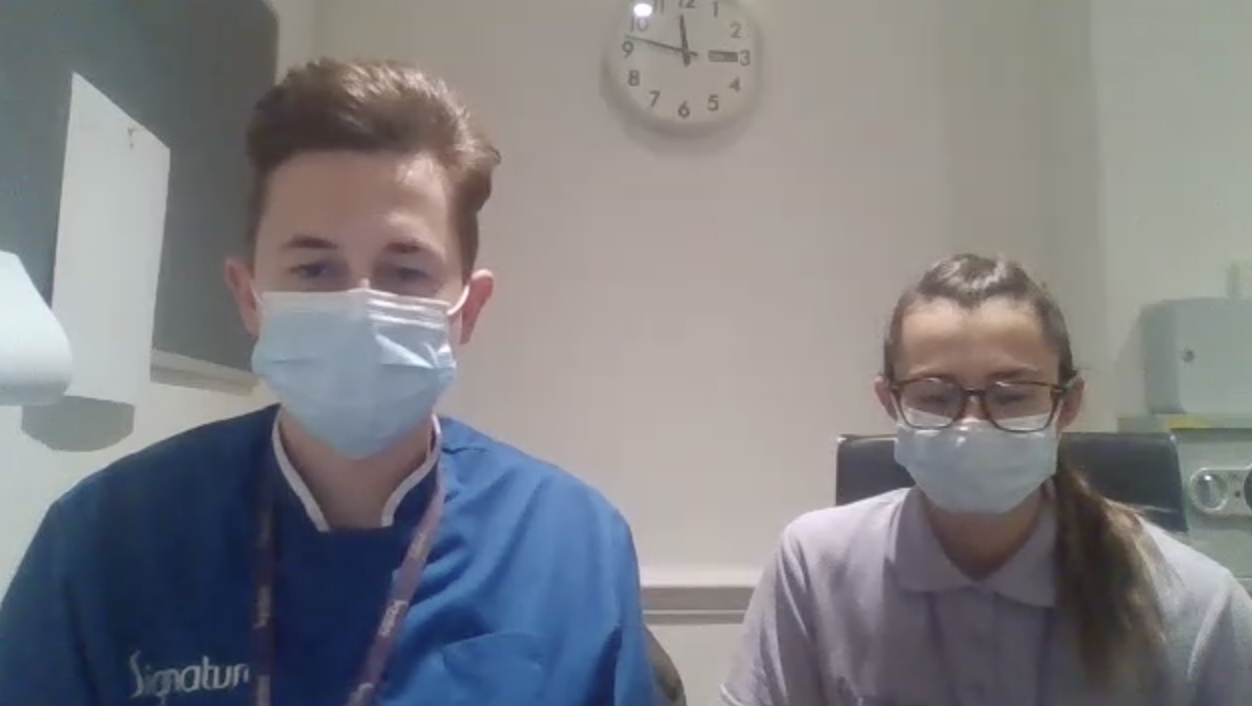It can be difficult to find activities to do with someone in end of life care. One great option is sensory activities. The Happiness Programme provides over 80 sensory games and activities, many of which are focussed on relaxation and stimulation for use with people at end-of-life care or people living from their beds.
We spoke to Bobby and Zoe, two members of the Rosebery Manor team, part of the Signature group, to find out how they were using the Happiness Programme for palliative care.

We started by asking them about their expectations and initial experiences on starting the Happiness Programme…
Bobby: “I’d used an interactive projector before but it was one that was mounted on the ceiling. Having the magic table 360 as a portable projector, opened up new possibilities and gave us a way of engaging residents who might not ordinarily benefit from an activity like this”.
Zoe: “My hopes were that we could run really engaging exercises with those less mobile and less verbal”.
“Getting started was easy – we had plenty of training so we were able to jump straight into the activities. Getting started was easy”.
Can you tell us about how it’s helping you deliver palliative and end of life care?
Zoe: “ We had a lovely lady at the end of life, we’ll call her ‘J’. It was a struggle to get her to interact with us. Once day, we put the fish game on the ceiling and J’s eyes lit up and was fixated on the game. Even though we couldn’t get much conversation from her, we could tell she was loving the magic of having fish swimming across her ceiling. It was amazing”.
“Since that session, we used it with her every time we went in to her. She absolutely loved the fireworks game and it had a really big impact on her”.
“There was another lady; we’ll call her ‘M’. She was also being given end of life care and was quite agitated, often telling members of the care team to go or leave her alone”.
“We used one of the landmark games, where pictures were projected on to her ceiling. For the first time, M was engaging with us and not telling us to leave. It was a real breakthrough”.
How have you adopted it elsewhere in the home?
The 1-2-1 sessions have been brilliant. We’re using it on a daily basis, and more so in the afternoons. It’s been added the activities planner too so a lot of the wider care team are now using it.
It’s had a big impact on many of our residents. We’ve got a lady who will happily spend several hours (if we let her) using the painting games – we’ve given her a variety of paint brushes which has helped her dexterity and concentration.
Bobby: “The sporting games have gone down brilliantly with our male residents – the football & ice hockey games have proved highly sociable and just a little competitive”.
Last thoughts…
Bobby: “what we’ve done to date has been incredibly effective, but we’ve got so much more to explore with the Happiness Programme.
”Zoe added “we’re really looking forward to using it with families, especially with end of life care where we’ve had such great success.”
Not a member of the happiness programme?
The Happiness Programme is a first-of-its-kind initiative helping to change the lives of people living with cognitive challenges. We use interactive light technology to provide meaningful activities for residents and patients in care homes and care settings. For more detail on what the Happiness Programme is and how it’s helping care venues across the UK, visit our getting started page.
Alternatively, jump to our dementia, learning disability, rehabilitation and NHS pages for more specific detail on how it’s helping care homes like Barchester and HC-One as well as hospitals and local authorities such as St George’s Hospital, London and Westminster and South Kensington Council.
For anything else, you can contact us here too.

Copyright © 2021 Social-ability. All Rights Reserved.